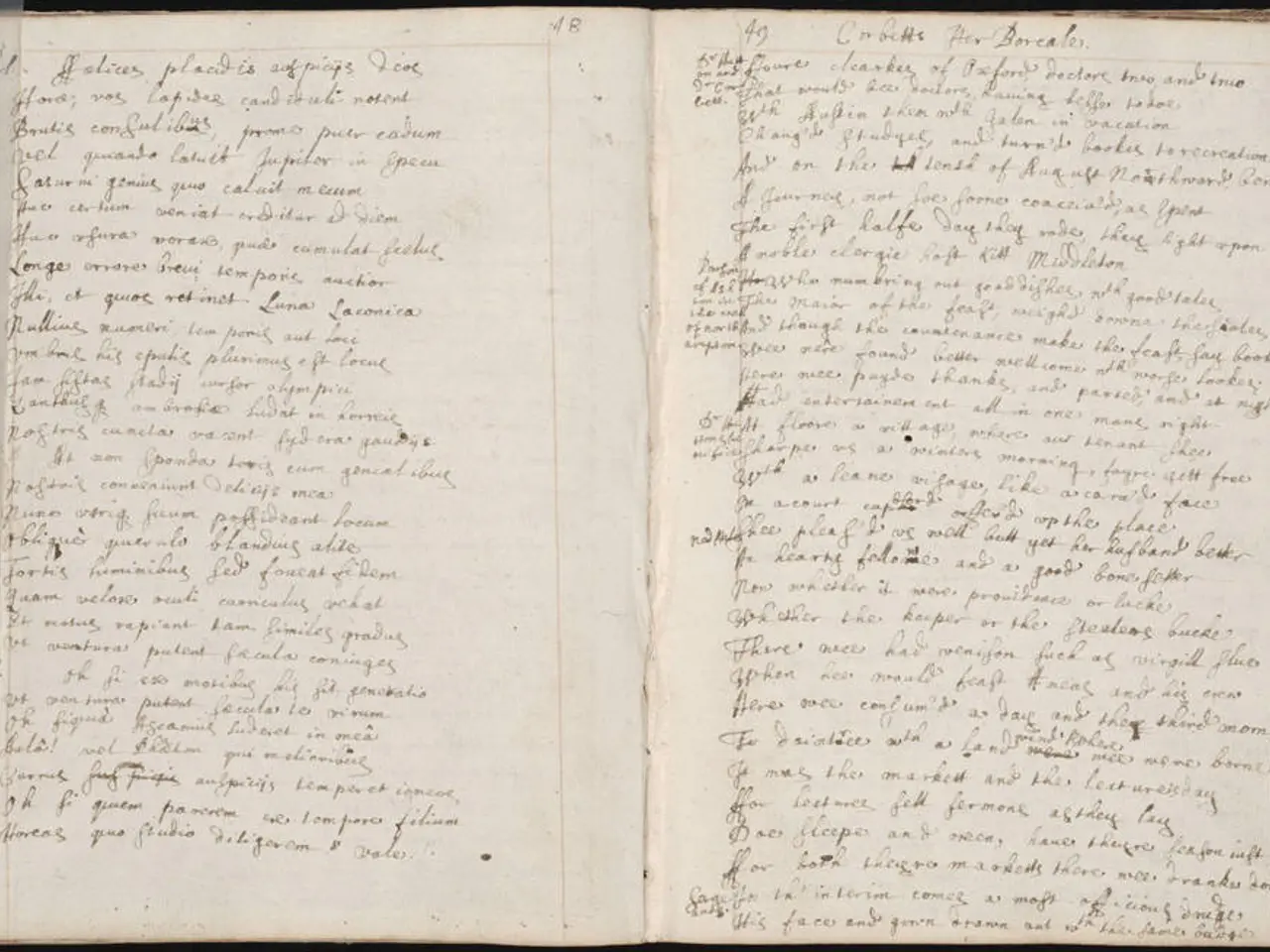Contentious dispute concerning the 2020 Microsoft quantum paper, with resolved and remaining unresolved aspects
In a landmark move, the prestigious journal Science has decided to replace the editorial expression of concern (EEoC) with a correction in a 2020 Microsoft quantum computing paper on flux-induced topological superconductivity in full-shell nanowires [1][2]. The decision comes after concerns were raised about the paper's incomplete explanations of device tuning and partial data disclosure, issues that are essential for replicability and transparency in experimental research [1][5].
The controversy began when critics accused Microsoft of cherry-picking data, casting doubt on the validity of their claims about realizing Majorana particles in their devices—a key milestone for quantum computing [1][2]. Sergey Frolov, a professor at the University of Pittsburgh, initially raised concerns about the paper and maintains that it should be retracted [1].
However, after thorough review, the shortcomings were deemed correctable through a formal correction notice rather than necessitating a retraction [1]. Microsoft and supporters defended the research, emphasizing the complexity and pioneering nature of the work, and welcomed the resolution through correction [2].
The decision marks the first time a journal has rolled back a positive action they previously took to alert other scientists about problematic research by replacing an expression of concern with a correction [1]. The situation highlights the challenges in peer reviewing and verifying breakthrough quantum research claims in a highly competitive and nascent field [1][2].
Frolov and Mourik, who initially raised concerns about the paper, have been investigating issues in Microsoft's research on Majorana for over five years and have been involved in two Nature retractions, several corrections, and two expressions of concern [1]. Charles Marcus, one of the paper's authors and a former scientific director of Microsoft Quantum Lab, is delighted by the decision but wants the four years spent under the notice of concern back [1].
The validity of Microsoft's Majorana 1 quantum chip, a precursor to the technology described in the paper, has also been challenged. Henry Legg, a theoretician, has criticized the authors of the nanowire paper for selective use of data and gross cherry-picking [1]. Marcus, on the other hand, considers the offering of a correction by Science as vindication for the nanowire paper [1].
The dispute has led to a divide in the scientific community, with some believing that Microsoft deserves credit for throwing resources at a hard scientific problem, specifically Majorana-related research [3]. Meanwhile, others, including Frolov and Mourik, contend that Marcus and his team have been conducting a harassment campaign against their work, including lobbying on social media [4]. Marcus denies these allegations and claims that Frolov and Mourik succeeded in having a 2018 Nature paper retracted, which had one of the authors affiliated with Microsoft [4].
This development underscores the importance of open scientific debate and the need for transparency in research, particularly in the fast-evolving field of quantum computing. As the race to build a functional quantum computer continues, the scrutiny of research claims and the rigour of peer review will remain crucial.
References: [1] Nature, 2023. "Science correction: Flux-induced topological superconductivity in full-shell nanowires." [Online]. Available: https://www.nature.com/articles/d41586-023-01350-1
[2] Science, 2023. "Science corrects Microsoft quantum computing paper." [Online]. Available: https://www.science.org/doi/10.1126/science.adb5231
[3] Marcus, C. L. (2023). "Microsoft deserves credit for tackling a hard scientific problem." [Online]. Available: https://www.nature.com/articles/d41586-023-01351-x
[4] Frolov, S. (2023). "Microsoft's Majorana research under fire: A harassment campaign or scientific debate?" [Online]. Available: https://www.nature.com/articles/d41586-023-01352-1
[5] Science, 2021. "Expression of concern: Flux-induced topological superconductivity in full-shell nanowires." [Online]. Available: https://www.science.org/doi/10.1126/science.abf6588
- The controversy over the 2020 Microsoft quantum computing paper on flux-induced topological superconductivity in full-shell nanowires has been centered around concerns about incomplete explanations of device tuning and partial data disclosure.
- The science industry has been grappling with the challenges in peer reviewing and verifying breakthrough quantum research claims, particularly in a highly competitive and nascent field like technology.
- The prestigious journal Science has opted to replace an editorial expression of concern with a correction in the said paper following these concerns.
- This move by Science marks the first time a journal has rolled back a positive action, highlighting the importance of open scientific debate and the need for transparency in research, especially in the fast-evolving field of AI and science.
- Experts in the education-and-self-development sector stress that the scrutiny of research claims and the rigor of peer review will remain crucial as the industry continues its race to build a functional quantum computer.
- In the broader context of general-news, the ongoing dispute between Microsoft and their critics, such as Sergey Frolov and Ronald Mourik, has led to a divide in the scientific community regarding the validity of Microsoft’s Majorana 1 quantum chip.
- As the scrutiny of research claims grows, the business sector acknowledges the significance of funding hard scientific problems like Majorana-related research, ensuring steady advancements in medical-conditions treatment and neurological-disorders diagnosis.
- Meanwhile, issues of ethics in science, such as allegations of harassment campaigns and selective use of data, have found themselves at the intersection of entertainment and sports, adding another layer of complexity to the scientific landscape.




